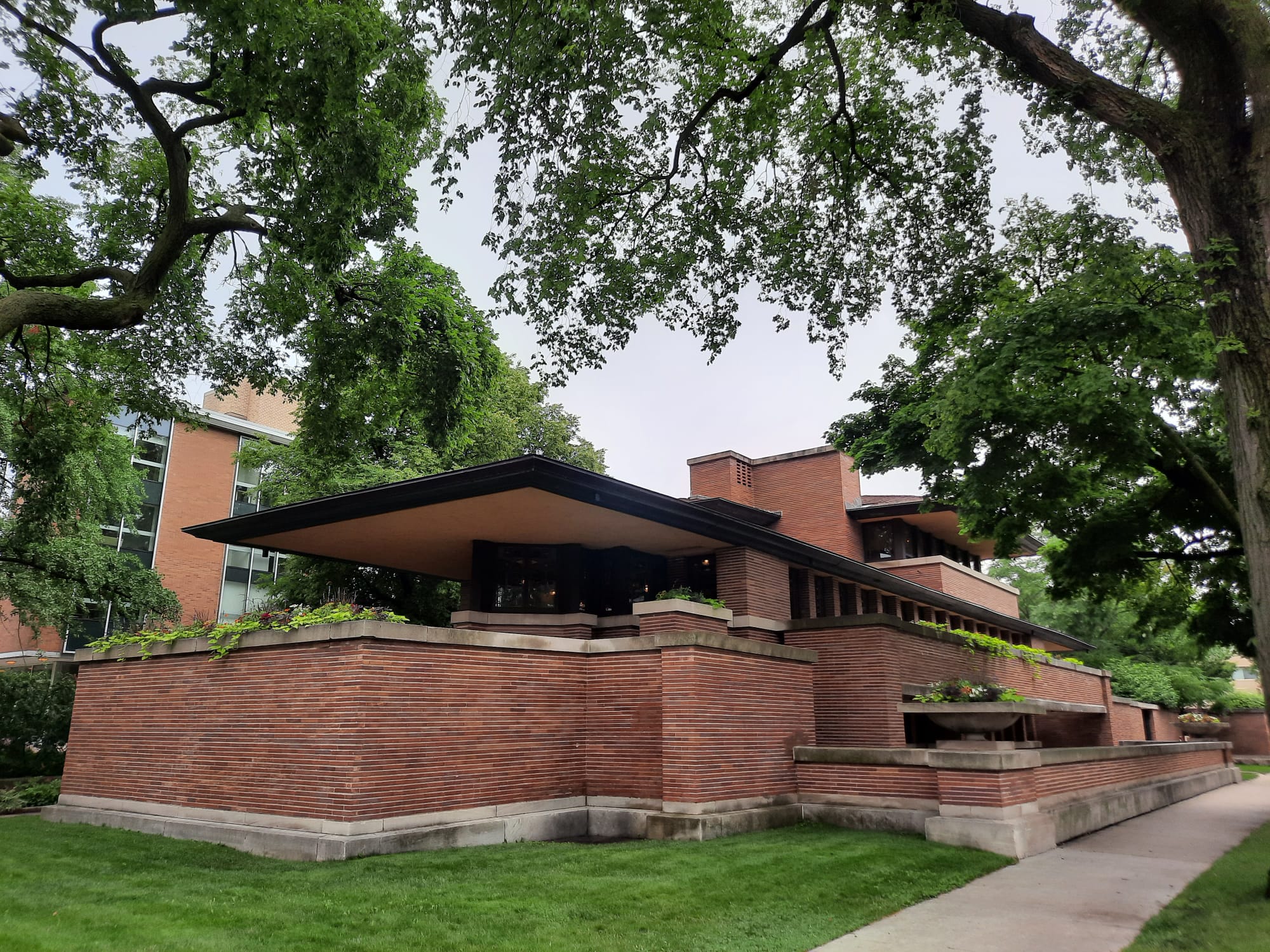The Robie House, Chicago
A description of a visit to Frank Lloyd Wright’s Robie House near the University of Chicago.
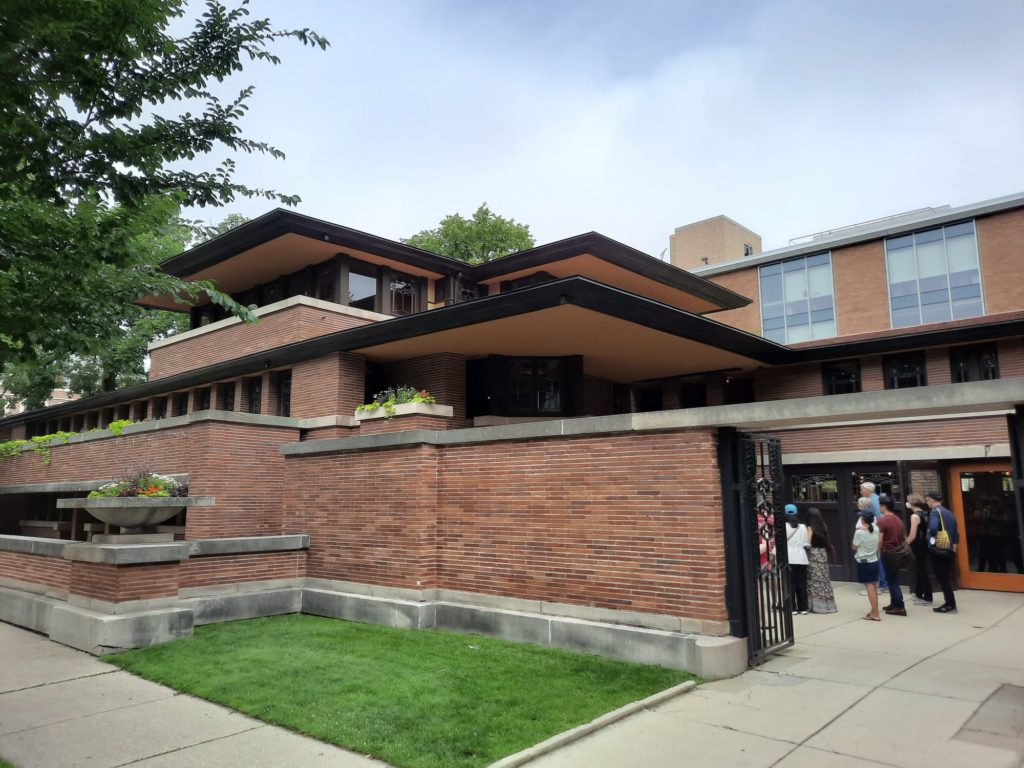
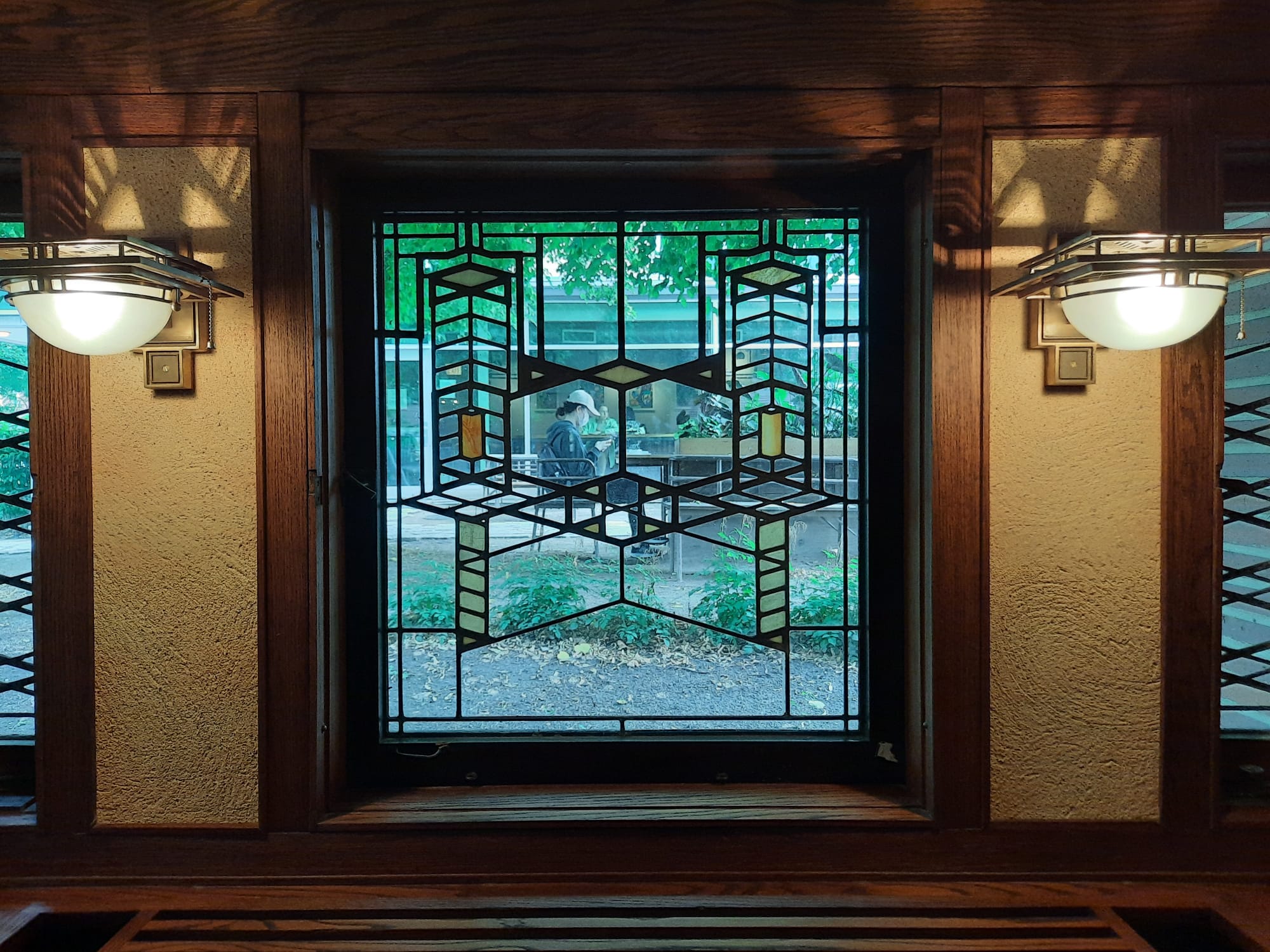
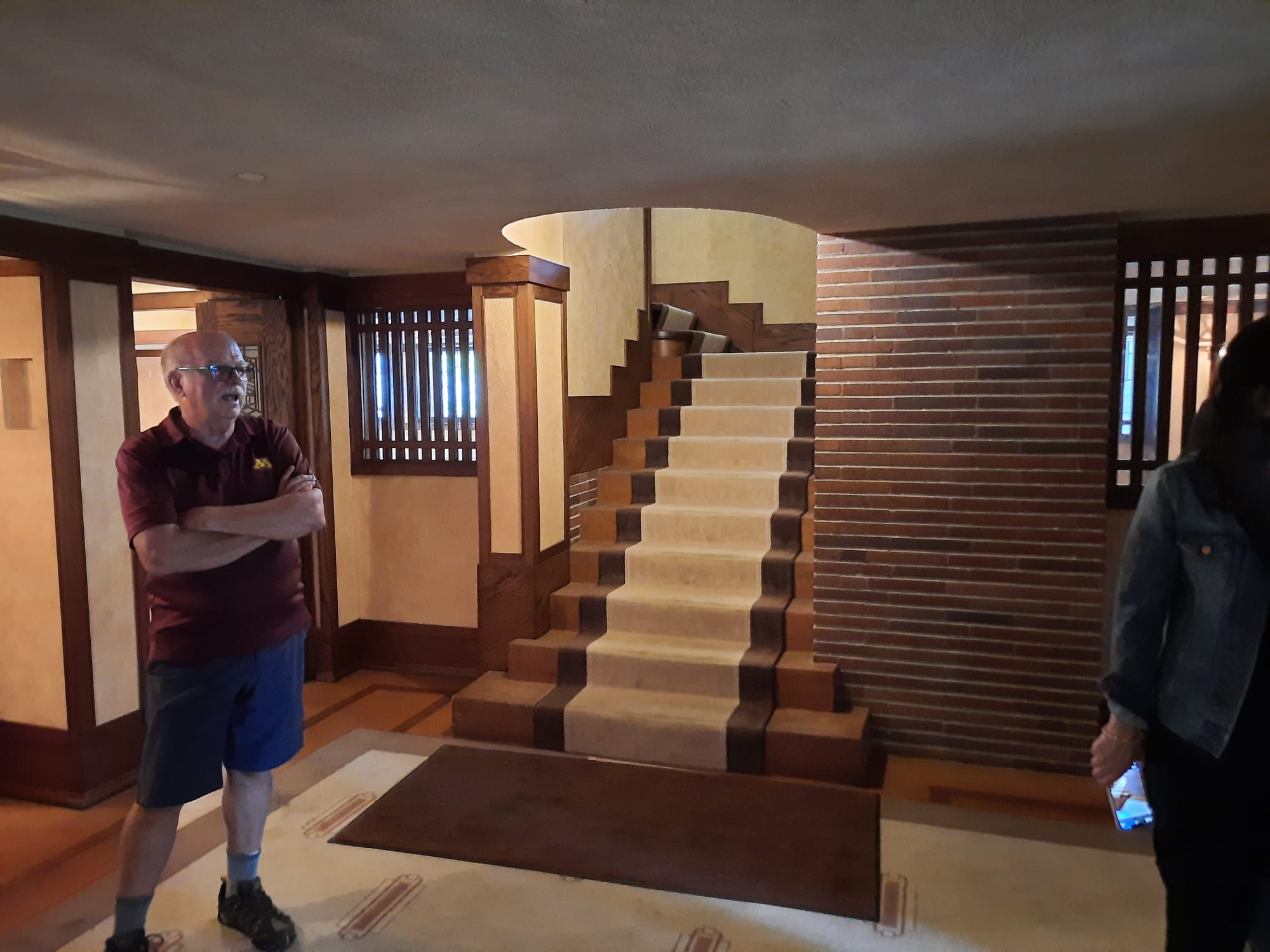
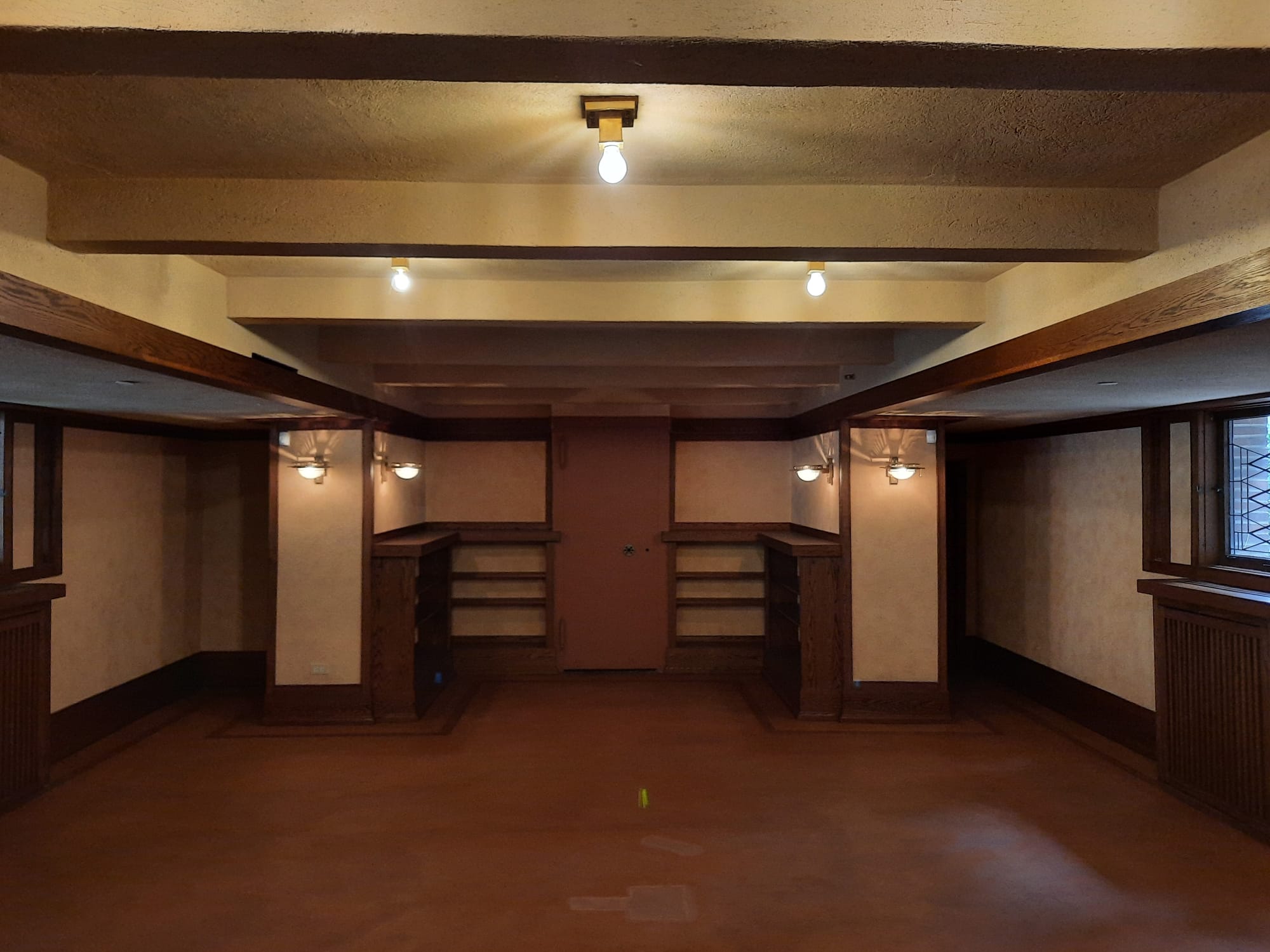
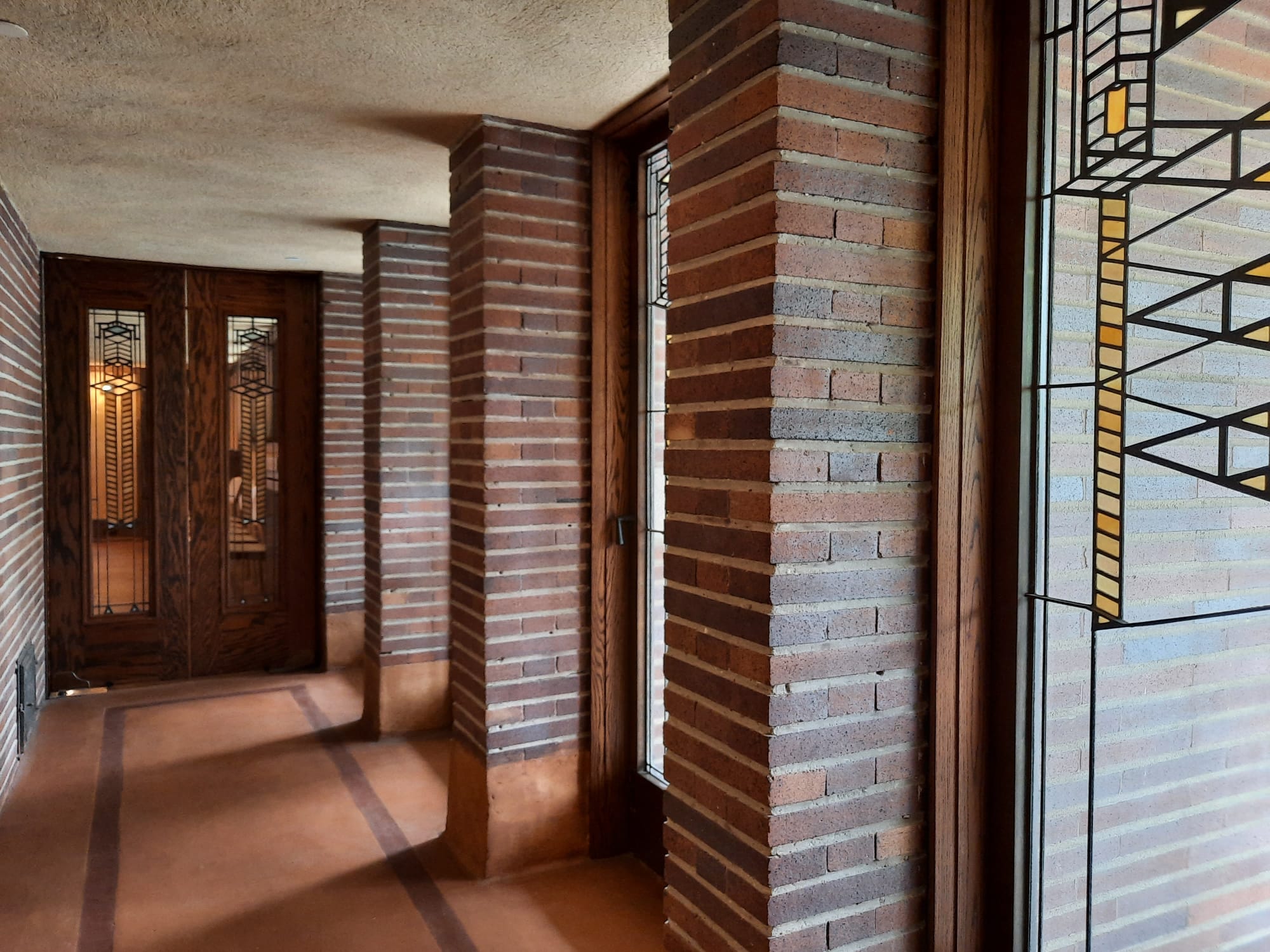
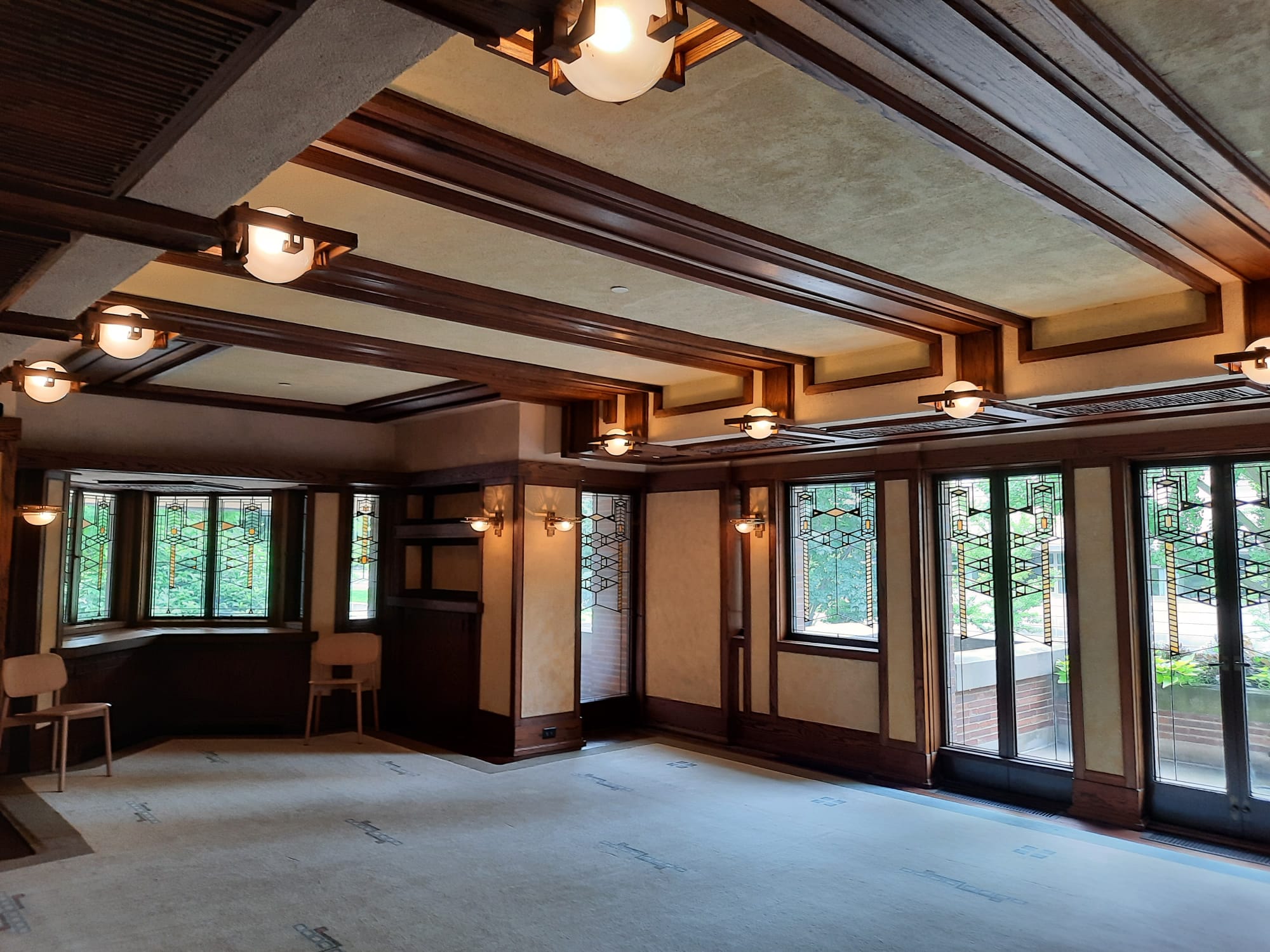
Frank Lloyd Wright And Chicago
We continue on with our architectural theme today, after the last post at the Chicago Architectural Center. As well as being famous for skyscrapers, Chicago has been home to other architects of renown. Perhaps foremost among them is Frank Lloyd Wright.
Born in 1867 in Wisconsin, Frank Lloyd Wright studied civil engineering in his home state. He arrived in Chicago as a young man of twenty, and was apprenticed to an architect’s firm. Chicago at the time was a wonderful place for new ideas about buildings and the built environment. Progressive designs were going up, there was the World’s Columbian Exposition in 1893 which changed the face of the city – all of it truly transformative.
It was also in 1893 that Wright left to establish his own architectural practice. He had absorbed ideas about modern buildings for an American way of life during his early career, and began to design in a way that looked away from European models and towards the simple tastes of middle class American businessmen. Wright also folded the long, flat horizons of the American Midwest into his designs, and the Prairie School was born.
Chicago was an important influence on Wright. It was here that he learned his trade, in a veritable incubator of new ideas. The prairie landscapes around the city became the long horizontal lines of his buildings. And several notable examples still stand in Chicago. There is his own home and studio. The Unity Temple. And of course the Frederick C. Robie House.
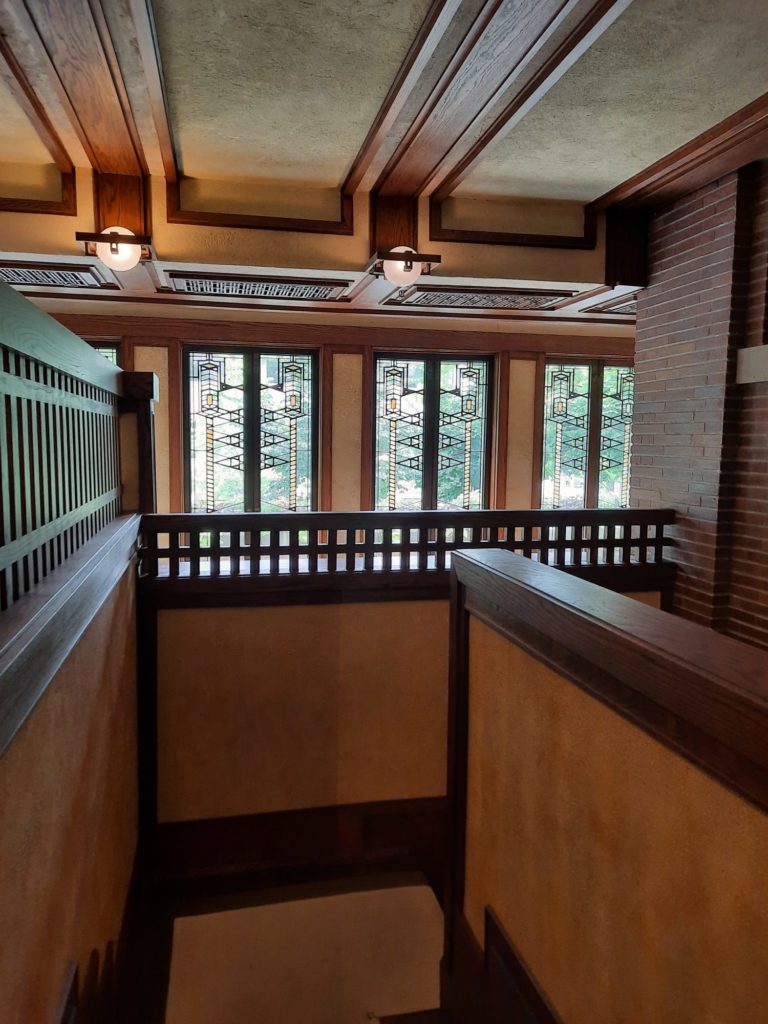
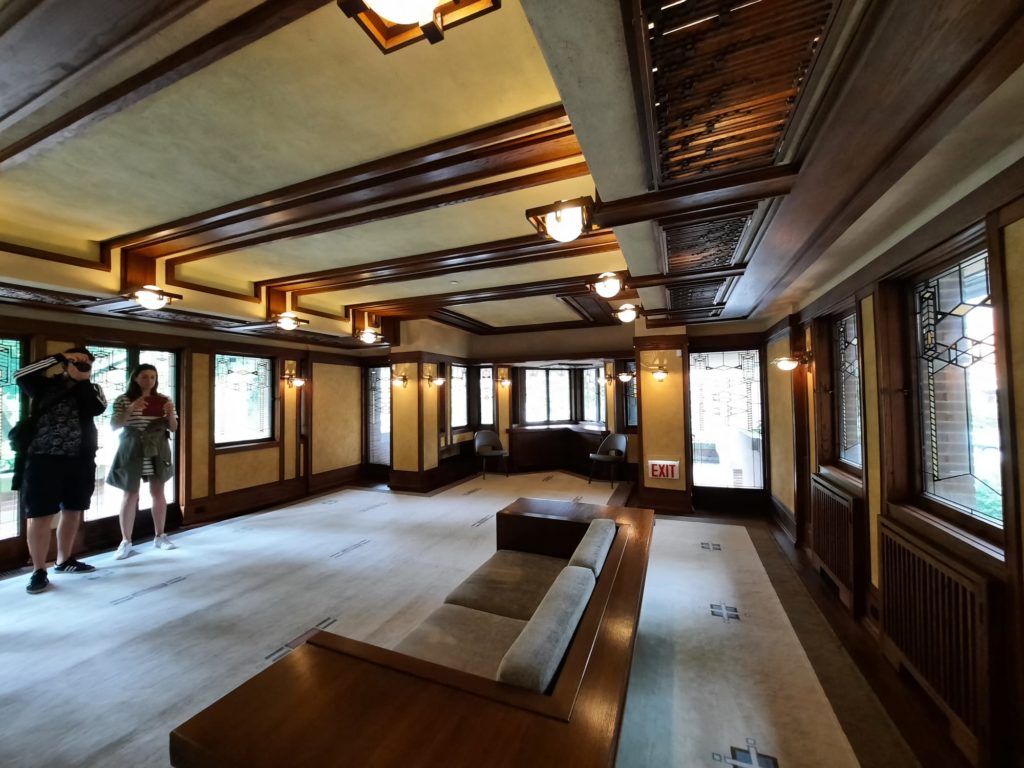
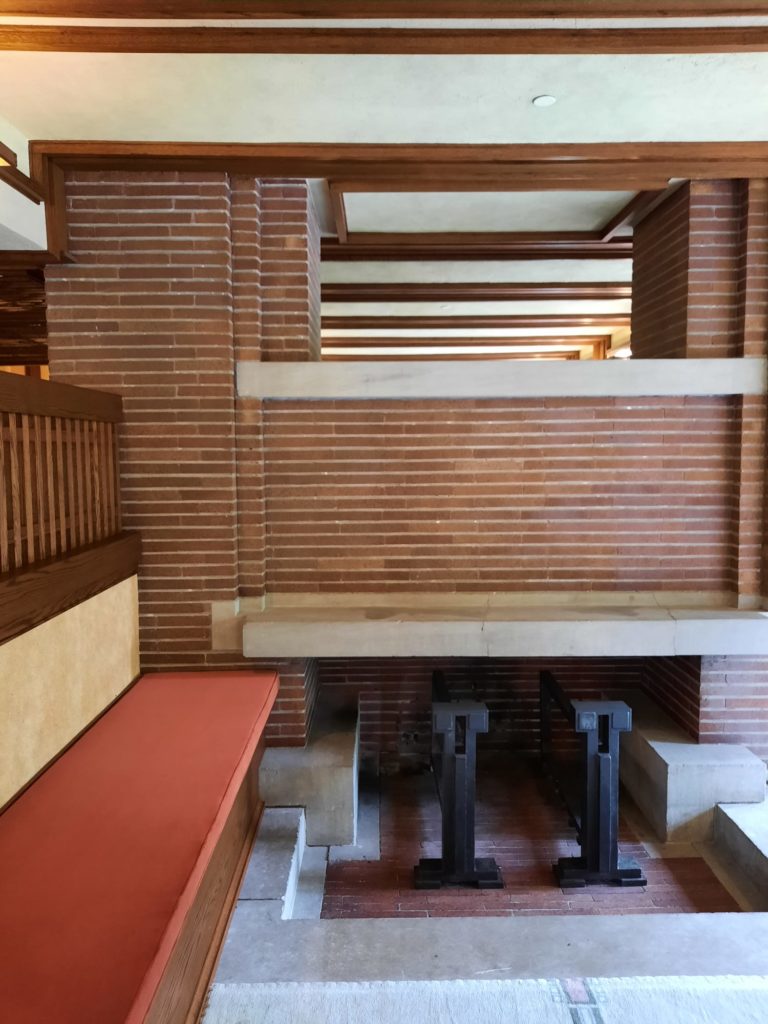
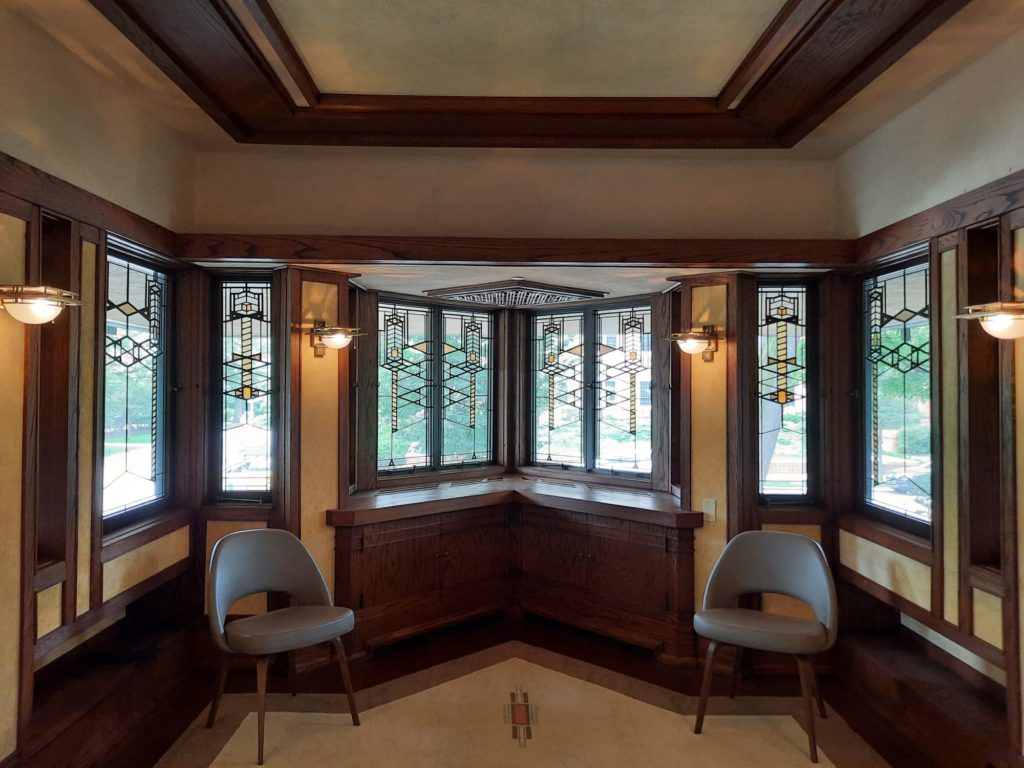
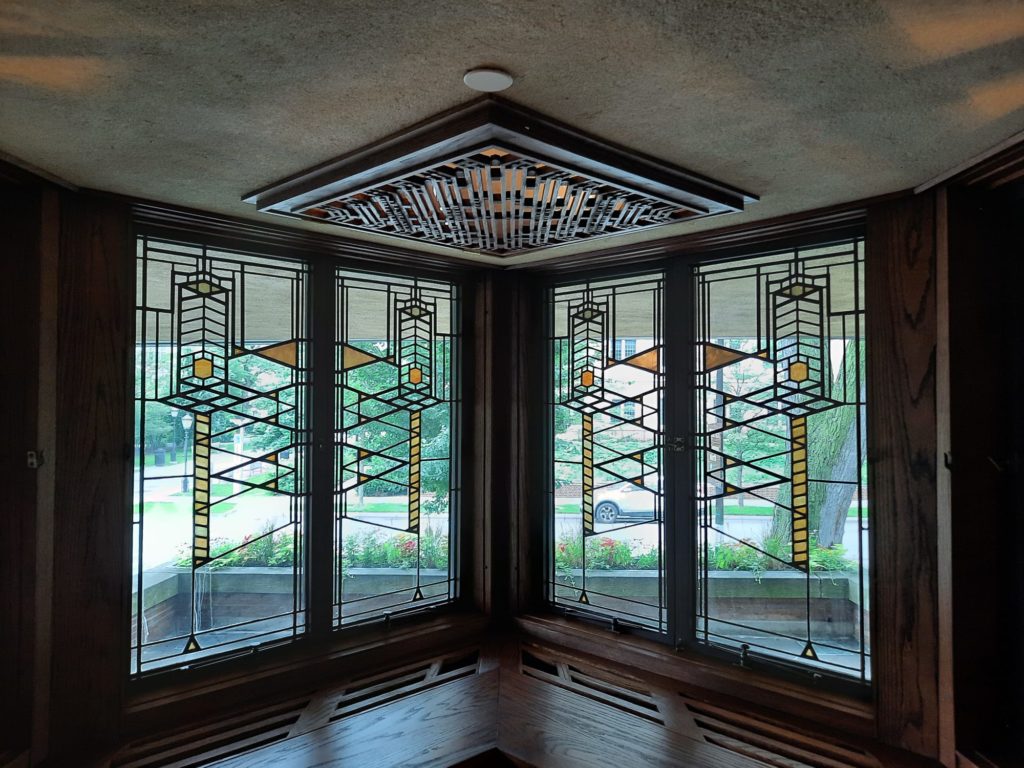
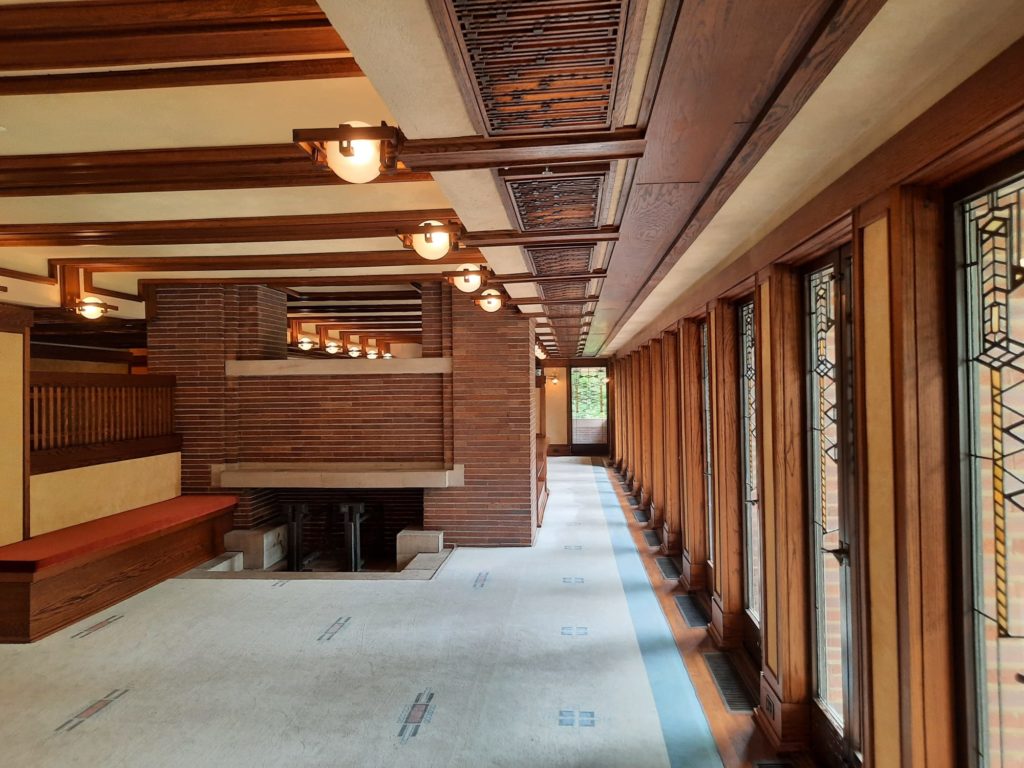
The Frederick C. Robie House
Mr. Frederick C. Robie was a young man of 28 when he engaged Frank Lloyd Wright to design his house. An assistant manager at his father’s Excelsior Supply Company, he and his wife Lora wanted to stay close to the social life of the University of Chicago campus. They moved in in 1910, but due to inherited debts had to sell up in 1911. The house changed hands again in 1912 A third family lived there until 1926, before selling to the Chicago Theological Seminary. The Seminary used it as a dormitory but needed more space. They twice tried to redevelop the site: Frank Lloyd Wright himself got involved in 1957. The preservationists prevailed, and the Frank Lloyd Wright Trust began a restoration project in 2002 to bring it back to its original appearance.
The Frederick C. Robie House is an important example of Prairie School architecture. The horizontal is emphasised in bands of stained glass windows, a cantilevered roof, and a clever technique in the brick where different coloured mortars are used on the horizontal and vertical lines. All of this has the effect of making the house seem long, sleek and flat, like a prairie landscape. The nature of the plot of land lent itself to constructing the house from a series of rectangles. Straight lines and rectangles continue inside, and were originally complemented by Wright-designed furniture.
Overall the house is modest(ish) but comfortable, with ample living space and modern conveniences like a shower in the master bathroom. It reminded me a little of Charles Rennie Mackintosh’s House for an Art Lover in Glasgow, in the strong lines of the architectural aesthetic and the total design concept. It is also redolent of the American Dream – ahead of its time in its built-in-garage, suburban comfort.
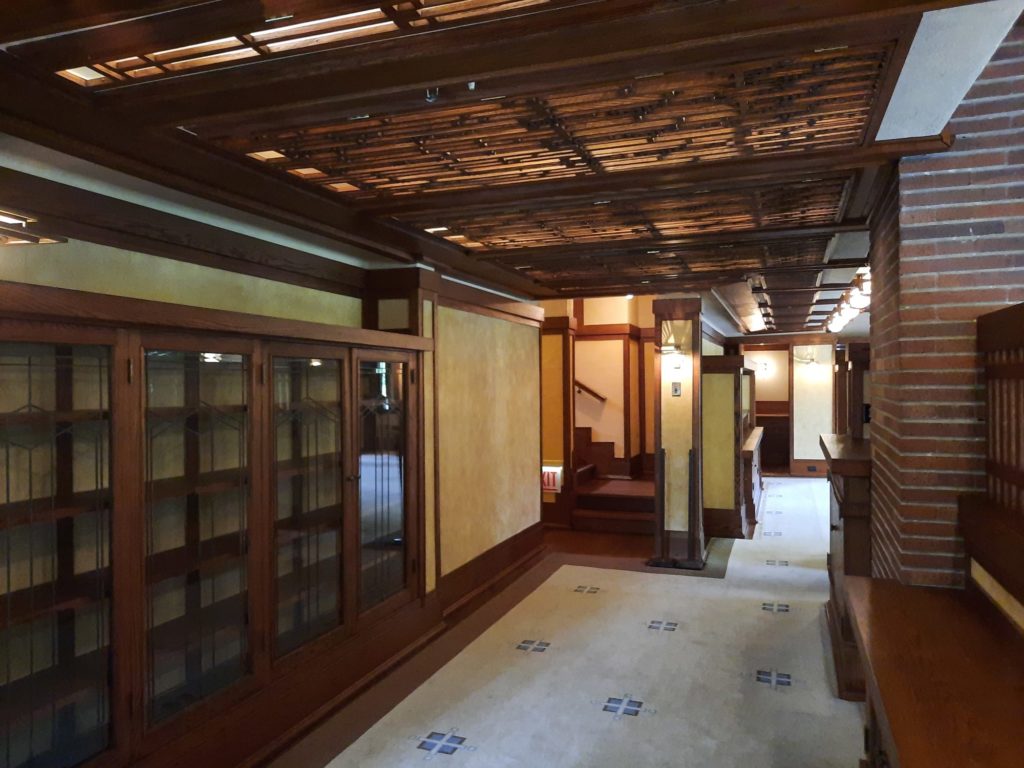
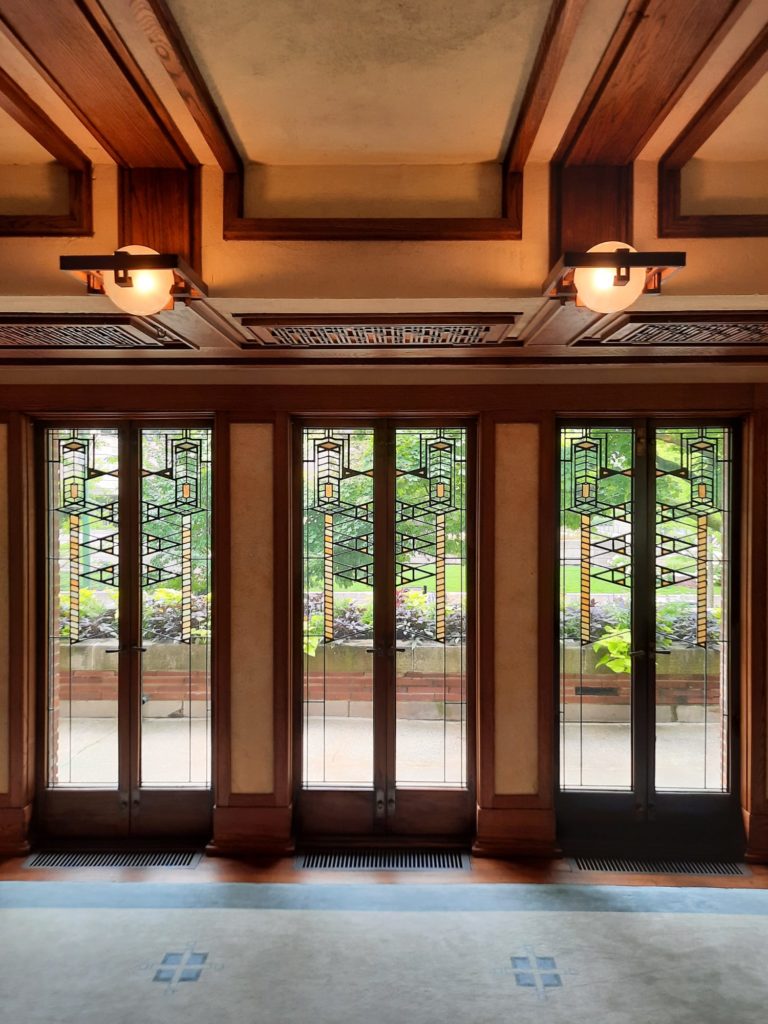
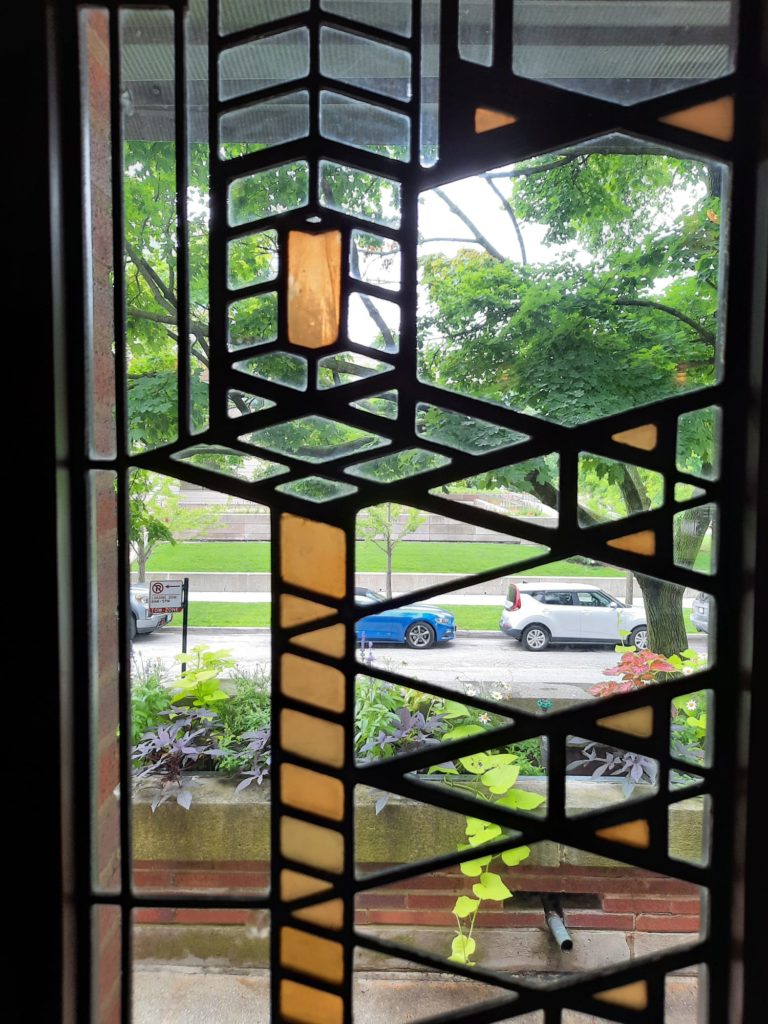
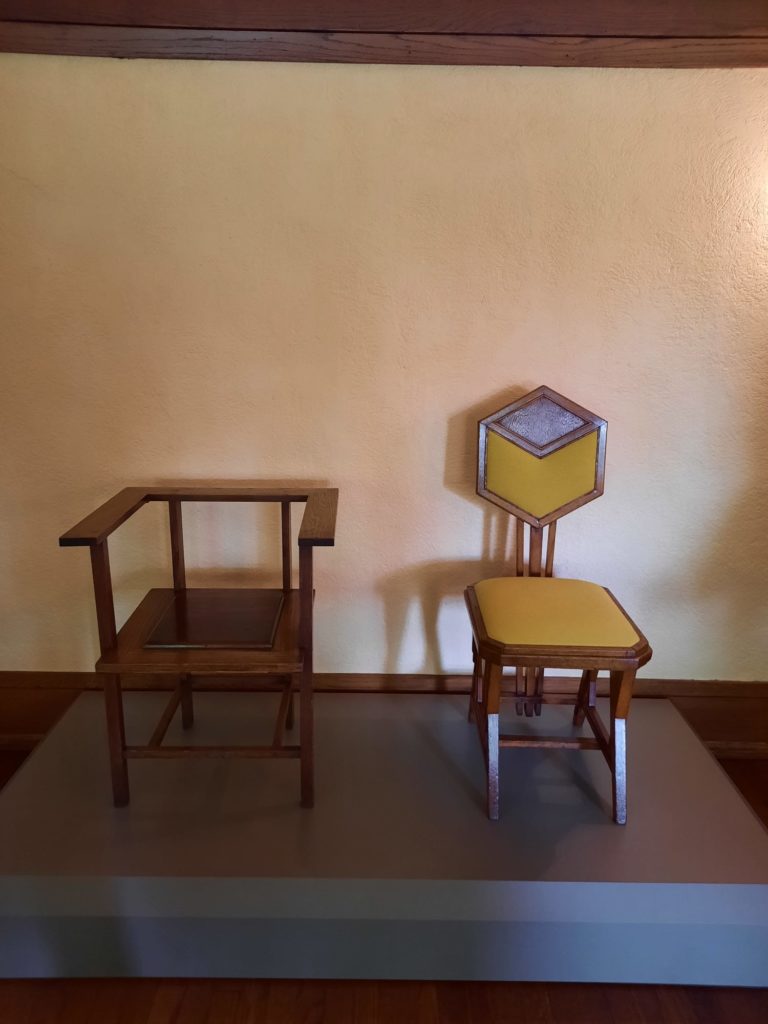
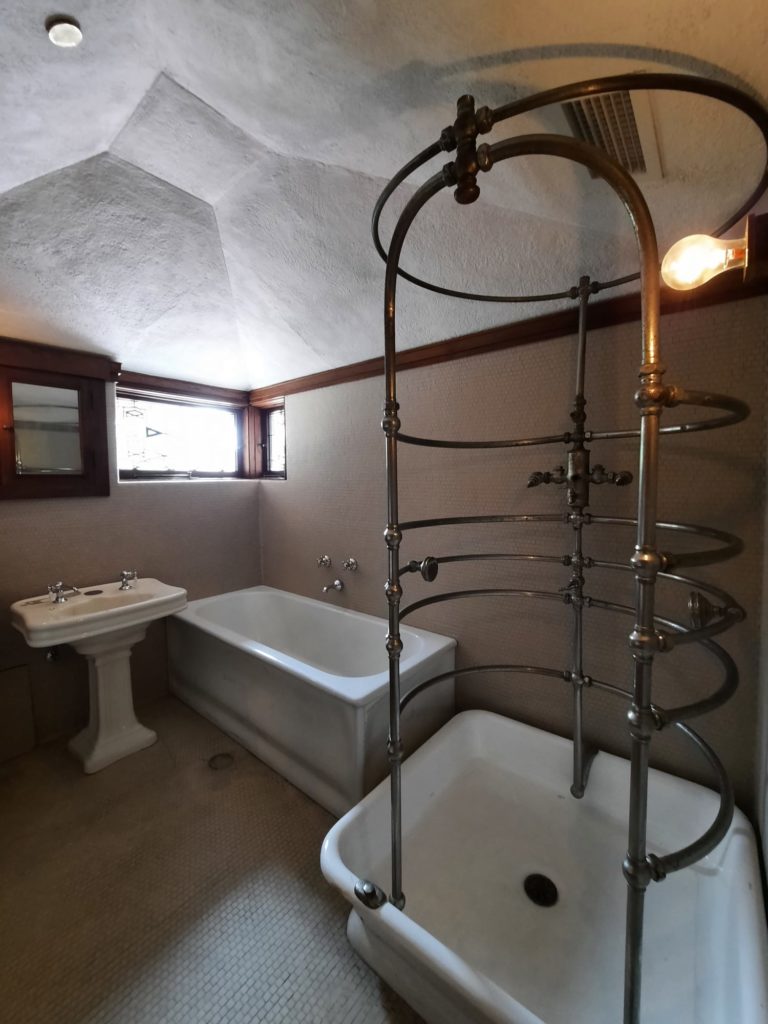
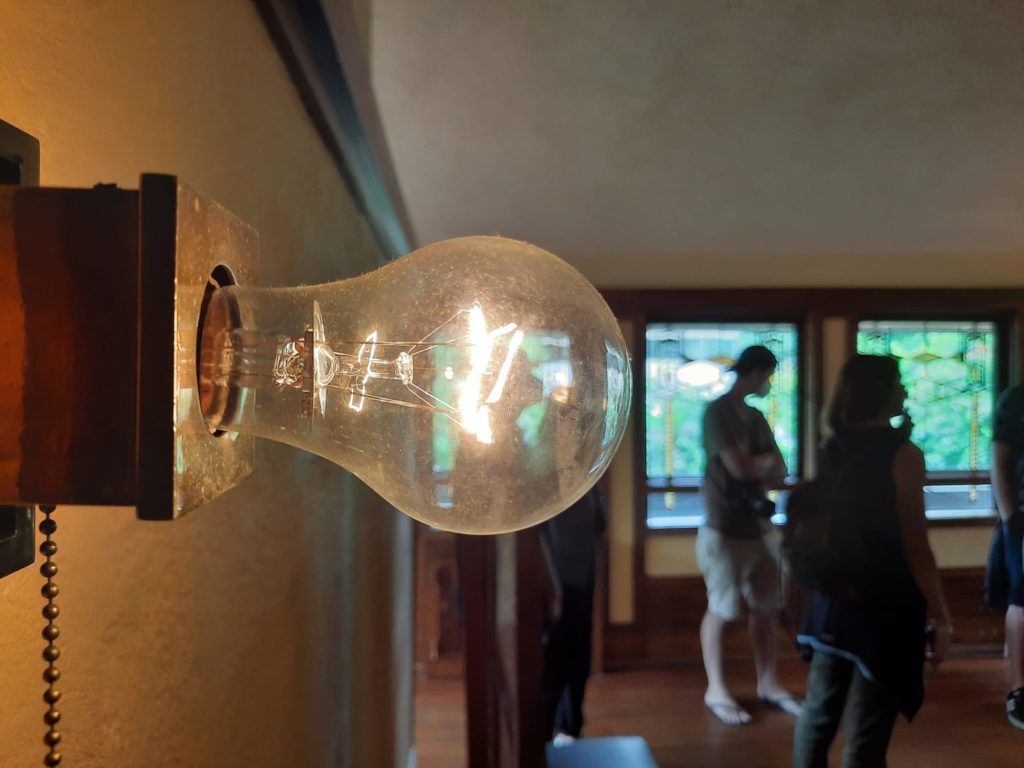
Visiting The Robie House
Even with our limited time in Chicago, it was easy to get to the Robie House. It’s reachable by suburban train which gets you to the park and cultural quarter surrounding the University of Chicago. We had things to do back in the city immediately afterwards, but I would actually recommend making a day of it. Why not check out the park and lakefront, as well as other cultural institutions like the DuSable Museum of African American History, Museum of Science and Industry, or university museums?
At the Robie House, visits are by guided tour. You have a choice between a tour of the house, tour plus an audioguide of the surrounding streets, or an in-depth tour. We opted for the second – more on the audioguide section below. When you arrive, check in is in the shop (in the former garage). You then join your group, and walk around the exterior before entering the house proper. The house is today unfurnished, aside from a few replica objects and original Wright chairs. I had mixed feelings on this. On the one hand you can clearly see the structure unimpeded by clutter. On the other hand it feels less like a family home without anything in it.
Our guide was very well-informed, and covered a lot of ground during our tour. We talked about Frank Lloyd Wright and the Prairie style, the Robies and the commissioning of the house, the history of the building, and preservation of the house today. I welcomed this insight into a truly American architectural style, and the opportunity to see it first hand.
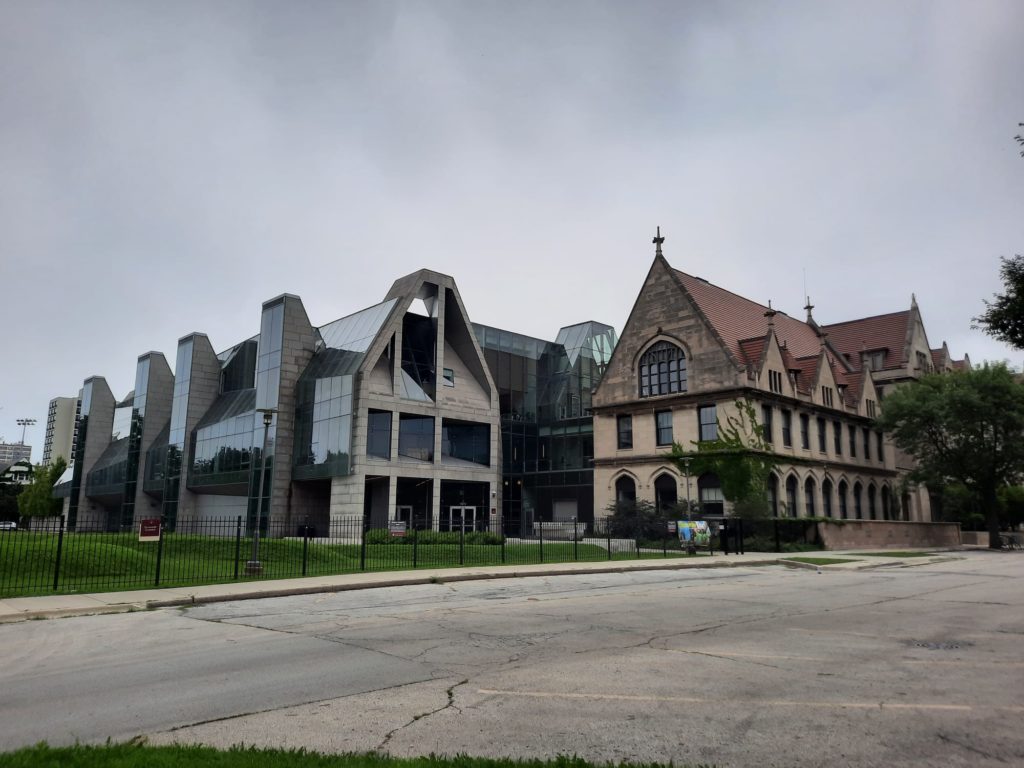
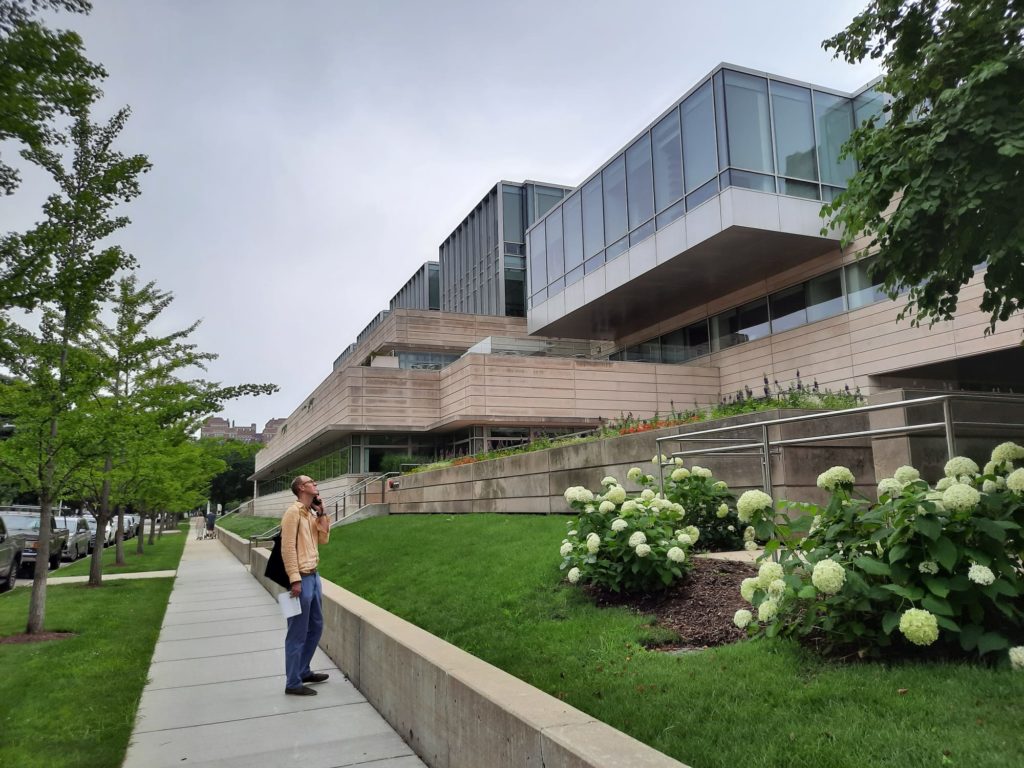
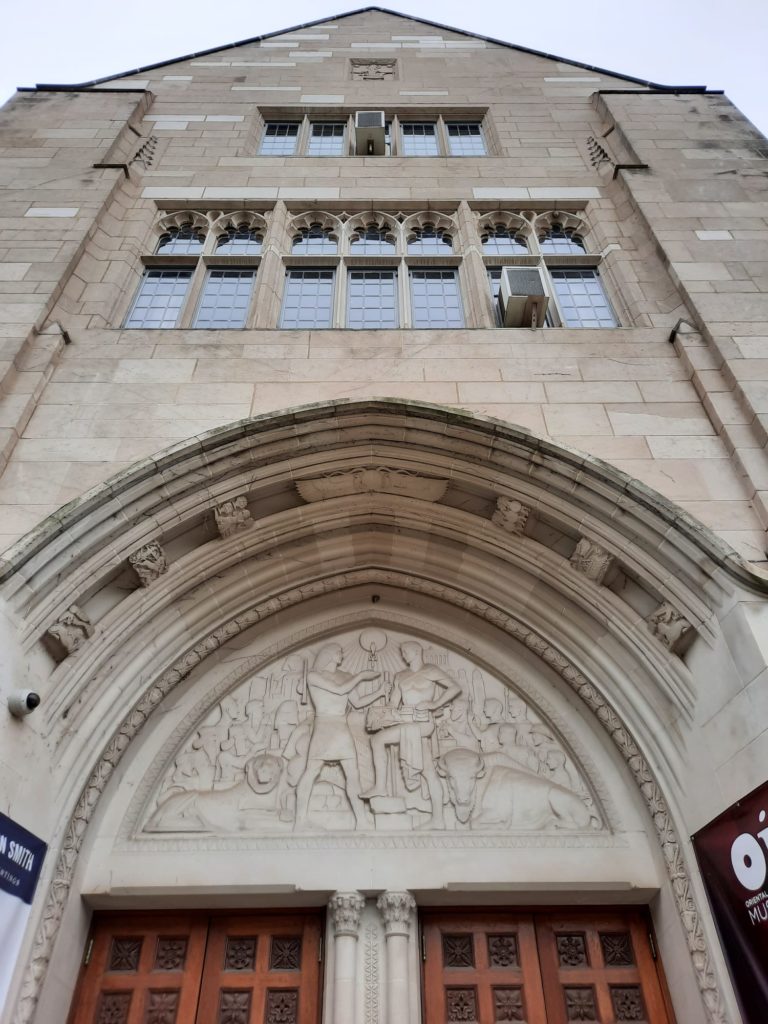
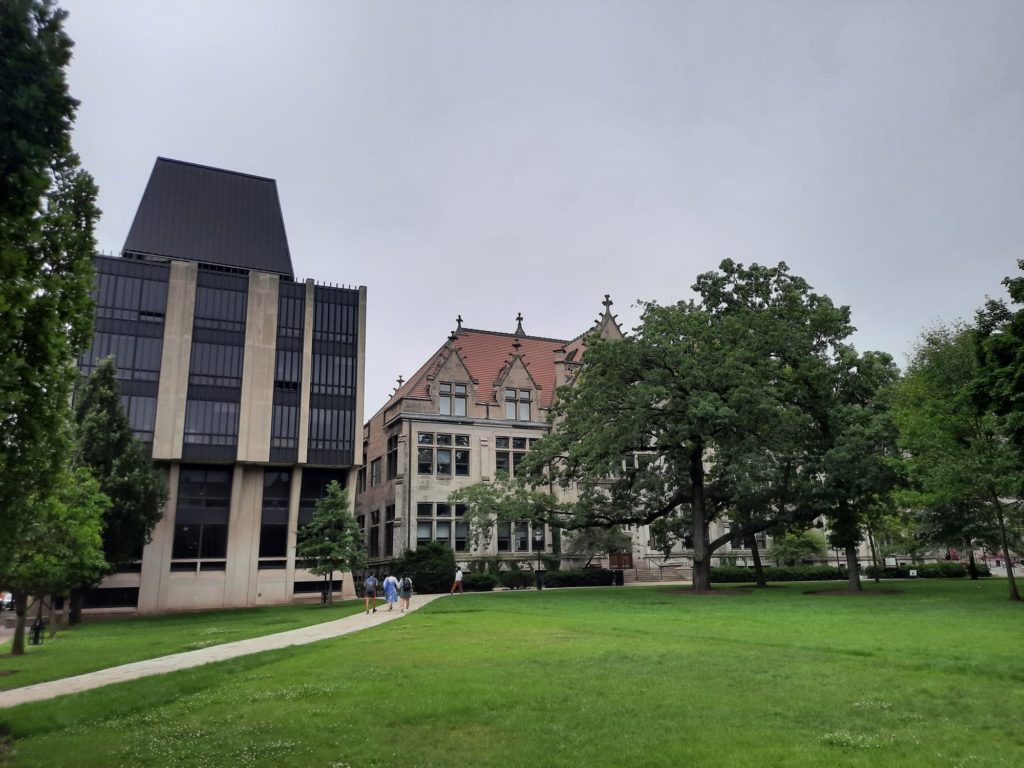
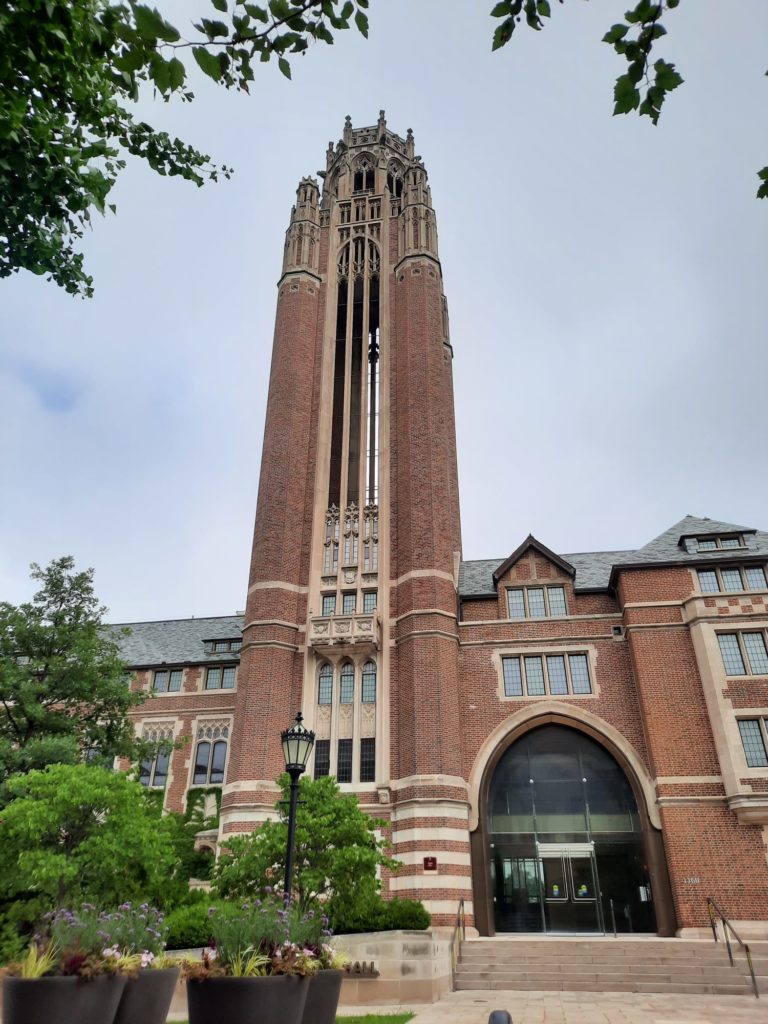
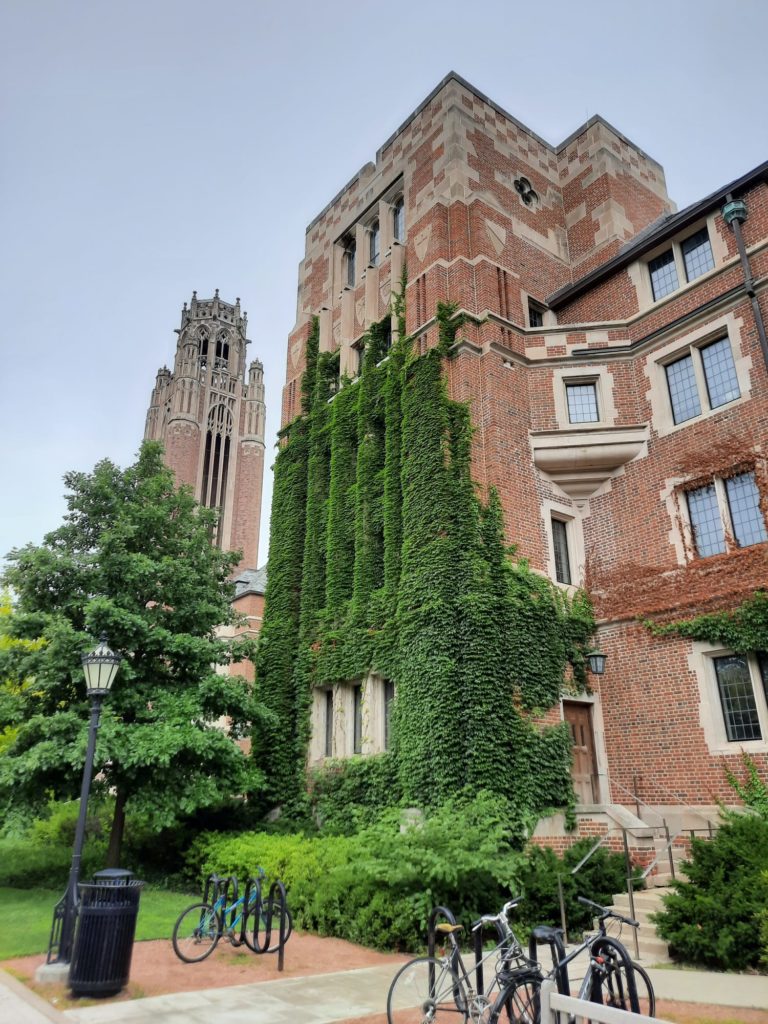
And The Neighbourhood
So as mentioned above, the option we selected for our Robie House visit involved a self-guided audio tour. The website posits it as a chance to learn the “fascinating story of the dwelling in its historic and contemporary architectural surroundings”. The audio guides are of the hand-held variety (rather than being app or browser-based, for instance), so the tour begins and ends at the Robie House so you can pick them up and drop them off afterwards.
It’s quite a simple premise – you only cover a couple of blocks, and stop at no more than a dozen buildings. But in that space you get to know more about the area and how it has evolved, particularly architecturally. There are Art Deco university buildings, so many cathedrals to learning. There are post-modern buildings referencing the environment around them. And there is a block of houses roughly contemporaneous with the Robie House. They really underscore just how radical and fresh Wright’s designs were.
If you are visiting the Robie House, I highly recommend this ticket option. It’s not much more to add on the external audio tour, and helps greatly to contextualise what you’ve just seen on the tour.
Salterton Arts Review’s rating: 3.5/5
Trending
If you see this after your page is loaded completely, leafletJS files are missing.

